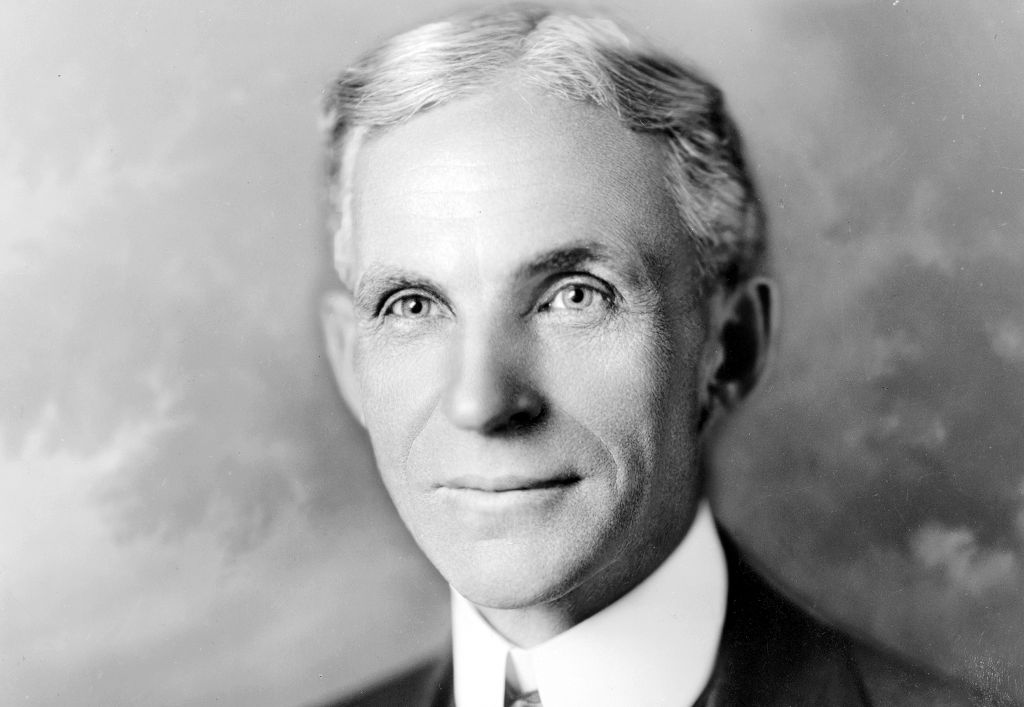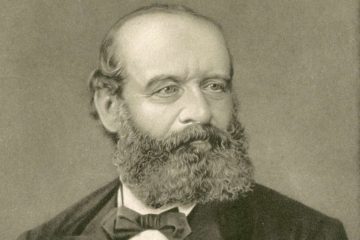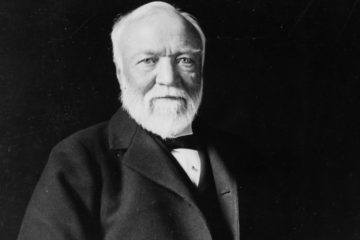
Looking on the Forbes 400, you’ll see businessmen like Richard Branson, Jeff Bezos and Warren Buffett are worth billions of dollars. But what if I told you that they weren’t necessarily the richest businessmen to have ever lived?!
Not only are we going to look at the richest businessmen who ever lived, but also how they amassed their huge fortunes.
In recent weeks, we have looked at how to become a millionaire, and more recently, how to become a billionaire. Now, we’re going to see if there’s anything that they all have in common, which you can then replicate!
15. Stephen Van Rensselaer – $102 Billion
Chances are that you’ve never heard of Stephen Van Rensselaer before, indeed, I hadn’t either until I wrote this. However, for those who have heard of him, you’ll know he was one of the richest businessmen of his day!
Born into a wealthy landowning family who were descended from New York’s first Dutch colonists, the Van Rensselaer’s controlled Renseelaerswyck, the largest manor estate in the world.
At the age of 21, Stephen Van Rensselaer would inherit his family’s estate. Looking at the estate, a young Stephen knew he could make more money from the land without selling it off.
To this end, Stephen began to sell perpetual leases for small parcels of land to farmers. Doing this allowed wannabe farmers to become actual farmers for only a small amount of money, thus making them more productive.
As the landlord, the more the land produced, the more the land was worth (and the more rent money he could collect!) Over time, this gave Stephen Van Rensselaer one of the most productive estates in the world, and made him the richest businessmen of his day.
Upon his death in 1839, Stephen Van Rensselaer controlled a large percentage of the US’s GDP, worth roughly $3.1 billion at the time, or roughly $102 billion when adjusted to today’s GDP!
14. Warren Buffett – $105 Billion
Also known as the “Oracle of Omaha,” Warren Buffett is undoubtedly one of, if not the, greatest investors to have ever lived! He is the perfect example of how compound interest can work in your favor!
Born in 1930, Buffett was the only son of stockbroker/politician Howard Buffett and his wife, Leila. At the age of ten, a young Warren first became interested in the stock market, before buying a few shares for himself a year later.
Over time, Buffett would enter the business world himself, owning a number of different revenue streams. At the age of 19, he enrolled at Columbia University to learn from famed investor and author, Benjamin Graham, himself.
Whilst at university, Graham would teach Buffett everything he knew about investing, which Buffett would then put to the test upon graduating in 1951. Within a decade of graduating, Buffett had become a millionaire due to his investments.
In 1962, Buffett acquired a controlling stake in a failing textile mill called Berkshire Hathaway. Over the next few years, Buffett would transform the company from a failing textile mill, into one of the largest holding companies in the world!
28 years later, in 1990, Buffett’s investments through Berkshire Hathaway, mostly in the insurance industry, would make him a billionaire. A little more than 30 years later, Buffett’s net worth has 105 times what it was 30 years ago…
13. Mark Zuckerberg – $110 Billion
Mark Zuckerberg is one of those businessmen that needs no introduction. In recent years, Zuckerberg has become one of the richest businessmen in the world, whilst also become one of the most hated too!
The son of a well-to-do dentist, Zuckerberg soon became interested in computer science at an early age, developing an instant messaging service he called “ZuckNet” for his family as a child.
In 2002, Zuckerberg was enrolled at Harvard, where he earned a reputation for being a programming prodigy, having developed a number of apps and programs for his fellow alumni.
With the help of several other dormmates, Zuckerberg would launch TheFacebook (now known as Facebook) from his Harvard dorm in 2004. Initially, the website meant to help his fellow alumni, and those at other universities.
However, the site soon took off, with it being used by non-university students as well as university students too. Eventually, the site became so popular that Zuckerberg dropped out of Harvard to work on Facebook full-time.
The value of the site alone made Zuckerberg a billionaire by the time he was 23 (in 2007), only three years after starting Facebook. Since Facebook’s IPO in 2012, Zuckerberg’s net worth has skyrocketed to a record $110 billion!
12. Bill Gates – $130 Billion

For much of recent history, Bill Gates has been the richest man in the world. As such, it stands to reason that Bill Gates would also be one of the richest businessmen to have ever lived!
Whilst not his first (or only) business, Bill Gates is best known for founding Microsoft with Bill Allen in 1975. Since founding Microsoft, the company has grown to become the world’s largest PC software provider.
For much of Microsoft’s early corporate history, Bill Gates would serve as its CEO and chairman, overseeing much of its early growth, as well as the release of Windows, MS Dos and other vital Microsoft systems.
Gates would use business tactics inspired by businessmen of the Gilded Age to undercut Microsoft’s competitors and grow Microsoft internationally. He even avoided being broken up for being a monopoly.
In recent years, Bill Gates has also become somewhat of an accomplished investor, having learned how to invest from his close friend, the aforementioned, Warren Buffett. However, this only makes up a small portion of his net worth!
As of the time of writing, Bill Gates’s highest net worth (to date) has been $130 billion. With that being said, it would be much higher, but Bill Gates has donated billions of dollars to various charities, as well as starting the Giving Pledge.
11. Stephen Girard – $135 Billion
Born to a sailor in Bordeaux, France, Girard would eventually follow in his father’s footsteps and become a sailor, eventually migrating to the United States in 1773, becoming a merchant and trader, traveling between North and South America.
However, the American Revolutionary War caused the British to clamp down on trade coming into the US, which effectively ended Girard’s trading empire before it ever really took off.
After the war, Girard would start up his merchant business once again, which he’d soon grow to the point where he was one of the richest people in his adopted home of Philadelphia.
In 1811, the charter for the First Bank of the United States expired, allowing Girard to sell his trading empire and buy the bank’s stock. In turn, this essentially began Girard Bank.
During the War of 1812, Girard would be the principle backer of the US government, lending them money to the tune of $1 million in 1812 dollars, a record for any private entity up until that point (a record that would only be broken during WWII!)
By the time Girard died in 1831, he controlled roughly 0.67% of the US national GNP, the most of any US figure to date. If he still did this today, he’d be worth a little more than $135 billion!
10. John Jacob Astor – $138 Billion
Whilst you may not be familiar with John Jacob Astor himself, you are probably familiar with the Astor family that have been one of the leading families in New York. This is all thanks to the family’s patriarch, John Jacob Astor.
Born in 1763 to a butcher/dairy salesman in Walldorf, in the Holy Roman Empire (modern-day Germany). Growing up working in his father’s butchers shop, he’d eventually migrate to Britain where he’d anglicize his name.
In either 1783 or 1784, he’d migrate from Britain to the New York, where he’d meet an American fur trader. Inspired, Astor would enter the fur trade himself, buying raw hides from Native Americans, prepare them and sell them.
Over time, Astor would begin to monopolize the fur trade, even going as far to convince Congress to pass a law preventing foreign fur traders from importing fur into the US! This made Astor the US’s first millionaire businessman.
Using his immense wealth, Astor would begin to buy land on the outskirts of New York City, particularly on the waterfront. Over time, Astor would build high-end properties on this land, which Astor would continue own the land but not the buildings themselves.
Following his death in 1848, Astor would leave most of his estate to his son William Backhouse Astor Sr. In effect, John Jacob Astor would establish his family as one of the leading families of New York, something that continues to this day!
9. Elon Musk – $180 Billion
Today, Elon Musk is one of those people who needs no introduction. After all, number of polls suggest that Elon Musk is one of the most recognizable entrepreneurs currently alive…
Originally from Pretoria, South Africa, Elon Musk would soon move to Canada, obtaining Canadian citizenship due to his mother being Canadian. From here, Musk would then move to the US, where he’d have internships with several Silicon Valley startups.
Musk would start his business career by starting Zip2, one of the first online city guides, in 1995. Two years later, Musk would sell Zip2, making $22 million for the sale.
From here, Musk would found X.com, which would eventually merge to become PayPal. When eBay purchased PayPal in 2002, Musk was PayPal’s largest shareholder, netting $100 million from the deal.
Using the $100 million he received from the PayPal sale, Musk has set up a series of companies, including:
- Car manufacturer, Tesla,
- Space exploration company, SpaceX,
- Tunnel construction company, The Boring Company
- Neurotechnology startup, Neuralink
- Solar Power company, SolarCity
Thanks to his holdings in these companies, Elon Musk has a net worth of $180 billion, a net worth that has grown exponentially over the last few years, due in part to Musk’s savviness as a businessman.
8. William Henry Vanderbilt – $150 Billion
In 1877, railroad and shipping magnate Cornelius Vanderbilt (more on him in a minute) died. Although his estate would be split between his many children, 95% of his estate would go to his eldest son William “Billy”.
From the age of 19, Billy had been groomed by his father to eventually take over the family business, learning the ins-and-outs of the banking and railroad industries in only a few years.
Upon inheriting the lions share of his father’s estate, Billy would take the reigns and begin to expand the already huge family business, almost doubling his father’s inheritance in only a few years.
With that being said, Billy did lose quite a bit of money in 1884, when he unknowingly invested in a Ponzi scheme that collapsed only a few months later.
Much like his father, Billy was a philanthropist. However, Billy was much more philanthropic than his father, funding the YMCA, the Metropolitan Opera, as well as expanding Vanderbilt University that his father had established.
Upon Billy’s death in 1885, his wealth would be split equally between his many children, many of whom would squander the family’s wealth in a matter of only a few generations!
7. Cornelius Vanderbilt – $185 Billion
Whilst Billy Vanderbilt was one of the richest businessmen to have lived, his wealth pales in comparison to his father’s, who would be the world’s richest man for much of his adult life.
Cornelius’s father operated a ferry company between New York and Staten Island. At the age of 16, Cornelius began his own ferry company, a company he would grow over the next few years.
Eventually, his ferry company would expand into an oceangoing steamship line, and to become one of the largest steamship lines in the world. In fact, his steamship line was so big, it donated a number of ships to the Union Navy during the civil war.
Vanderbilt made billions off the California Gold Rush, however, began to notice that railroads were beginning to take away portions of his customers. Rather than trying to crush the railroads, Vanderbilt became infatuated with them.
Over the course of the late 1850’s, 1860’s and 1870’s, Vanderbilt would begin to slowly buy up railroad companies all over the US, to the point where he and fellow railroad pioneer, Jay Gould, owned almost all of the US’s railroads.
Combined, Vanderbilt’s shipping and railroad empire was $185 billion when adjusted for inflation. Upon his death in 1877, his eldest son, Billy, would inherit the lion’s share of his estate.
6. Jeff Bezos – $190 Billion
As of the time of writing, Jeff Bezos is the world’s richest man, with Amazon being one of the world’s largest websites and corporations! As such, it stands to reason that Jeff Bezos would be one of history’s richest businessmen…
Born to a single teenage mom, Bezos became interested in technology and science at a young age, even going as far to build an electronic alarm to keep his sister from coming in his bedroom.
After graduating Princeton University in 1986, a young Bezos was inundated with numerous offers from several major tech companies. However, Bezos turned them down to work in the fintech, and later financial industries.
In late 1993, Bezos decided to start an online bookstore he called Amazon, from his garage. Amazon managed to undercut the prices of traditional bookstores by removing all the middlemen, which made the site quite popular.
Using this popularity, Bezos was able to expand Amazon into selling pretty much everything else that you can legally sell! In recent years, Amazon has become many people’s go-to website for buying whatever they need.
Due to this, Jeff Bezos has become the current richest man in the world, with a peak net worth of $190 billion (as of the time of writing) although many expect that this will increase exponentially in the next few years…
5. Henry Ford – $200 Billion

Today, Henry Ford is remembered for a lot of things, namely the Ford Motor Company that he founded and lent his name to. However, he is also remembered for being among the richest businessmen to have ever lived!
Originally born on a farm in Michigan to immigrants, Ford would spend his childhood studying, dismantling and rebuilding watches. At 16, Ford would move to Detroit to become an apprentice machinist.
By his mid-thirties, Ford had not only been introduced to the automobile, but had built his own one, the Ford Quadricycle. With the backing of famed inventor Thomas Edison, Ford would begin to build his own automobiles.
After starting a number of failed high-end automobile manufacturers, Ford had an epiphany: build high volumes of low-cost automobiles which the middle class could afford. This would result in the Ford Motor Company’s Model T.
When it was released in 1908, the Model T’s price was $850 ($24,000 in today’s money), and was accessible to much of the middle class. Due to this, the Model T sold 15 million times, the most for an automobile of its time!
Building on this, Ford would release a slew of further cars, all of which made Ford one of the richest businessmen of his day. Upon Henry Ford’s death in 1947, his entire $200 billion (in today’s money) estate would be left to his son, Edsel.
4. Jakob Fugger – $221 Billion
Alongside the aforementioned Stephen Van Rensselaer, German banker Jakob Fugger is probably the least well-known on this list, with most of those who know him, knowing him from the Fuggerei social housing complex he helped fund!
Alas, Jakob Fugger, perhaps better known the moniker “Fugger the Rich” was one of the richest businessmen to have lived.
Born into a rich German banking family in Augsburg, Jakob Fugger was groomed by his father (also called Jakob) to become a well-to-do merchant, like their family had been for past 20 years or so.
Much like his ancestors, Jakob Fugger soon proved to be a talented merchant, Jakob soon began to loan money to local silver mines. Instead of asking for the usual debt documents, Fugger instead became a shareholder in the mines.
Over time, Fugger came to own all of the mines in the area. This led to him becoming extremely rich, which caught the attention of Emperor Maximilian I, who would quickly promote Fugger to become his personal financial advisor.
Due to this, Fugger soon came to mint most of the Holy Roan Empire’s gold coins, as well as becoming the Pope’s personal financier. As a result, the already rich Fugger amassed a wealth of $221 billion in today’s money (although some people claim it was as much as $400 billion!)
3. Nathan Mayer Rothschild – $250 Billion
Today, the Rothschild name is synonymous with the word “wealth”. Whilst by no means the only wealthy member of the family, by far the richest was Nathan Mayer Rothschild, the founder of the family’s London branch.
Born to German Jewish banker Mayer Rothschild, Nathan was the third of five sons. Growing up, his father, the personal financial advisor to the Elector of Hesse, ensured all of his sons learned the ropes of the banking industry.
Upon becoming adults, Mayer Rothschild would send his five sons to the five major European financial centers: Frankfurt; Vienna; London; Naples and Paris. As the third oldest, Nathan would go to London.
Initially, Nathan would make his money in the highly lucrative textile industry, before eventually moving into the securities exchange industry. By 1809, Nathan had moved to dealing gold bullion and coins, much like his father had done in Frankfurt.
However, Nathan would make the majority of his money during the War of the Seventh Coalition, during the Napoleonic Wars.
Here, Nathan would use his advanced knowledge of the Battle of Waterloo’s outcome to buy depressed stocks which would increase in value monumentally once it had been announced that the British had defeated Napoleon.
Seeing their brother’s success, the Rothschild siblings would replicate what Nathan did, with the Rothschild essentially performing what the World Bank does today. This helped them to become the world’s richest family!
2. John D. Rockefeller – $350 Billion
When it comes to the richest businessmen to have ever lived, it’s hard not to think of John D. Rockefeller. After all, even though the federal government brought his empire to its knees, Rockefeller was still insanely rich!
Rockefeller would start his business career as a bookkeeper, before owning his own bookkeeping business. Despite only being in his early twenties, his bookkeeping business would takeoff before John later sold it.
Following this, Rockefeller would enter the oil industry, becoming one of the co-founders of Rockefeller, Andrews & Flagler. Unlike other companies, Rockefeller’s didn’t just refine oil, but also found new uses for the “waste” created during the oil refining process.
This latter fact made Rockefeller, Andrews & Flagler far more successful than its competitors, allowing Rockefeller to begin slowly buying out his failing competitors, leading Rockefeller to form RA&F’s successor, Standard Oil.
Eventually, Standard Oil would become the largest oil producer in the world, producing 90% of the entire world’s oil. Standard Oil would become so successful, because Rockefeller would fill it full of the CEOs of the companies he acquired.
As time progressed, Standard Oil was broken up into 34 different companies. Ironically, Rockefeller would own many of these, becoming infinitely more wealthy after Standard Oil was broken up, to the tune of $350 billion in today’s money!
1. Andrew Carnegie – $371 Billion
Whilst John D. Rockefeller is often remembered for being the richest businessman ever, Andrew Carnegie was slightly richer than Rockefeller, even if only a “small” amount…
Originally born in Scotland, Carnegie migrated to the US when he was 12. Here, he began working in the railroad industry, where he soon knew more about the industry than his bosses did.
Carnegie would invest most of his paycheck into up-and-coming industries, mainly the oil and steel industries. Within a few years, Carnegie would cash out and become one of the first investors in the Columbia Oil Company .
A few years after that, Carnegie would sell his shares in the Columbia Oil Company and start the Keystone Bridge Company, which he’d soon sell in order to form Carnegie Steel!
Over time, Carnegie would take over and merge most of the US’s major steel producers, managing to increase profits, lowers costs, whilst lowering prices for consumers (a rarity during the Gilded Age).
In 1901, American financier J.P. Morgan would acquire Carnegie’s steel empire for $225.64 million (in 1901 dollars, today worth $371 billion), before merging it into his pre-existing empire to form US Steel.
However, Andrew Carnegie was one of the greatest philanthropists in history, giving away the majority of his wealth to fund things like public libraries. As such, when Carnegie died in 1919, he was worth less than 1% of his peak net worth!
Which of history’s richest businessmen do you think you’ll emulate? Tell me in the comments!


